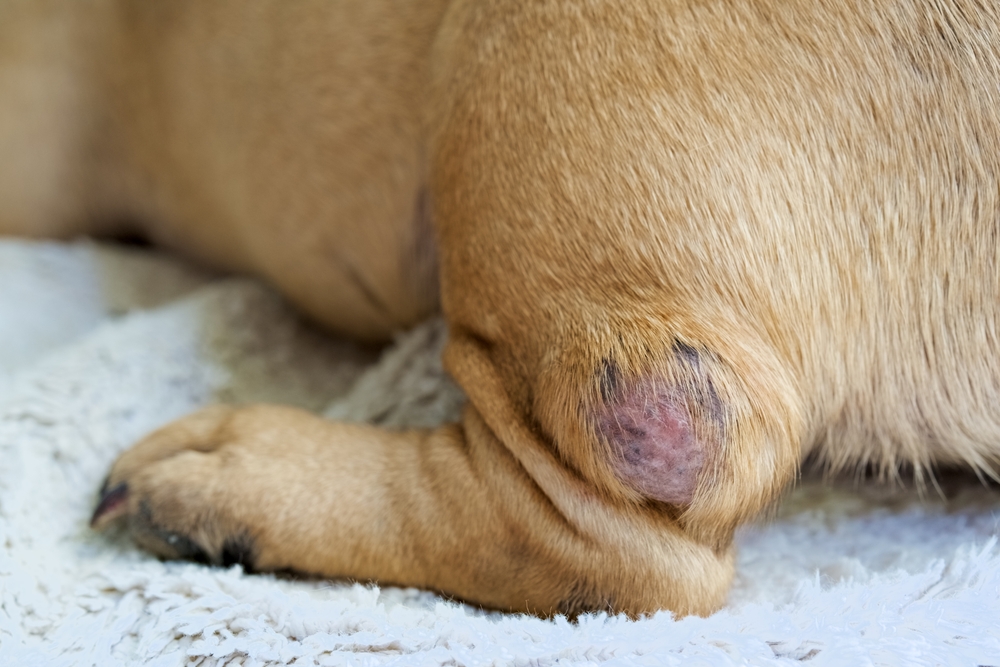Cancer is a major health concern and a common condition for people and pets. This disease is the leading cause of death in dogs and cats 10 years of age and older, and while a pet’s cancer cannot always be detected in the earliest stages, you should be aware of this condition’s potential signs and risk factors. An early cancer diagnosis and appropriate treatment greatly improves your pet’s prognosis. To help you recognize as early as possible whether your pet has this life-altering disease, our South Austin veterinary team at Oliver Animal Hospital responds to your concerns regarding common pet cancers, risk factors, and signs.
Question: What is cancer in pets?
Answer: Cancer—uncontrolled cell growth—typically develops as a result of genetic and environmental influences. When abnormal, old, or damaged cells divide and multiply without stopping, they can form malignant tumors, which—without treatment—can expand and spread rapidly to other body tissues.
Q: What is my pet’s cancer risk?
A: Many environmental and genetic factors can influence your pet’s cancer risk. These factors include:
- Carcinogen exposure — Exposure to carcinogens (i.e., cancer-causing agents), such as sunlight, chemicals, and cigarette smoke, can increase a pet’s disease risk.
- Genetic predisposition — While all pets have a cancer risk, some breeds—such as golden retrievers, Doberman pinschers, German shepherd dogs, Bernese mountain dogs, and boxers—have a high genetic predisposition to this disease.
- Age — Cancer occurs most frequently in older pets, likely because their weakened immune system is less able to suppress uncontrolled cell growth. In addition, the longer a pet lives, the longer is their potential carcinogen exposure.
- Spay status — Unspayed female dogs and cats have an increased mammary cancer risk.
Q: What are the most common cancers in dogs?
A: Many dogs develop cancer, but senior dogs have the highest risk. Nearly 50% of senior dogs develop some form of cancer, which includes:
- Lymphoma
- Hemangiosarcoma
- Mast cell tumors
- Melanoma
- Osteosarcoma
Q: What are the most common cancers in cats?
A: While cancer is less commonly diagnosed in cats—largely because fewer cats regularly visit the veterinarian—the disease still affects millions of cats each year. Some common feline cancers include:
- Lymphoma
- Squamous cell carcinoma
- Mammary tumors
- Fibrosarcoma
Q: What are potential cancer signs in pets?

A: Many cancer signs can indicate noncancerous health conditions. However, if your pet exhibits any concerning physical or behavioral changes, your veterinarian should examine them. Some cancers are more detectable than others, but you can help your pet receive a cancer diagnosis early—when the disease is more treatable—by keeping an eye out for the following changes:
- New lumps and bumps — Some lumps, such as fatty tumors (i.e., lipomas), are benign, but fast-growing lumps that suddenly pop up are often malignant. If your pet has a new or changing lump on or beneath their skin, ensure your veterinarian examines the growth. Your veterinarian may perform a needle biopsy to determine whether the cells are cancerous.
- Limping or lameness — While limping and lameness are common in older pets, often indicating arthritis, your pet’s movement abnormalities may be osteosarcoma (i.e., bone cancer) signs, which can cause excruciating pain, making them reluctant to walk or exercise.
- Wounds that do not heal — If your pet has a sore that does not heal appropriately—or that scabs over, appears to go away, but keeps recurring—cancer may have weakened your furry friend’s immune system. Some cancers, such as mast cell tumors, can also resemble a sore that does not heal.
- Coughing or breathing difficulties — Growing cancerous masses can cause your pet to experience breathing difficulties. If your pet has a dry, persistent cough, pants heavily while at rest, and takes shallow breaths, they may have lung cancer or a tumor near their heart.
- Abnormal odors — Strong, unpleasant odors from your pet’s body, particularly the mouth, nose, ears, or anal region, may signal a cancerous tumor.
- Rapid weight changes — Pets’ unexplained weight loss is a common cancer sign, indicating a gastrointestinal tumor. If your pet is having difficulty chewing and swallowing, they will likely eat less, which can indicate an oral tumor or a tumor in their esophagus, lungs, or stomach. Alternatively, sudden weight gain or bloating can also be a cancer sign.
- Bleeding or discharge — Blood, pus, vomit, diarrhea, or any other abnormal discharge may signal that your pet has any number of several serious health conditions, including cancer.
- Changes in bathroom habits — Changes in your pet’s bathroom habits are potential cancer signs, and may include chronic diarrhea, frequent accidents, difficulty urinating or moving bowels, and bloody urine or stool.
Determining whether your pet’s signs indicate they have a cancer-related disease can be challenging. However, if you have any concerns, take the wisest approach, and ask our team to examine your furry friend. Remember, the earlier a cancer diagnosis is made, the better your pet’s prognosis. If you suspect your pet has cancer, contact our Oliver Animal Hospital team to schedule a diagnostic appointment.







Leave A Comment